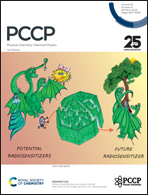NiSe2/CeO2 catalysts from Ce-UiO-66 metal–organic skeletons and their electrocatalytic oxidation of methanol, urea and glycerol†
Abstract
Hydrogen is a viable alternative energy source to fossil fuels. In order to manufacture enough hydrogen to meet the needs of social growth, finding an alternate energy source that is more effective is essential. Electrochemical water cracking is a more appropriate method for producing hydrogen. The methanol oxidation reaction (MOR), urea oxidation reaction (UOR) and glycerol oxidation reaction (GOR) can be used to replace the anodic oxygen evolution reaction (OER) and indirectly accelerate the hydrogen evolution reaction (HER), which has the advantages of saving energy and reducing environmental pollution. In this study, Ni/CeO2 catalysts were prepared by thermal annealing of MOFs (Ce-UiO-66) containing nickel species and NiSe2/CeO2 nanocrystalline catalysts were obtained through the selenation reaction at different temperatures. The NiSe2/CeO2-450 °C catalysts exhibited superior catalytic performance for the MOR, UOR, and GOR. The MOR showed a peak current density of roughly 186.68 mA cm−2 and a low oxidation potential of around 1.34 V. Similarly, the UOR demonstrated a peak current density of approximately 142.28 mA cm−2 and a low oxidation potential of around 1.32 V. Furthermore, the GOR exhibited a peak current density of approximately 82.56 mA cm−2 and a low oxidation potential of around 1.37 V. NiSe2/CeO2-450 °C could improve electrocatalytic performance for the MOR, UOR, and GOR, which is attributed to the more active sites that were exposed as a result of utilizing MOFs (Ce-UiO-66) as a precursor. Additionally, selenation increased the ability to transfer electrons. This research is crucial for the production of inexpensive, easily accessible transition metals in place of expensive noble metals, for the reduction of wastewater pollution from methanol and urea, and for the creation of effective anodic oxidation electrocatalysts.



 Please wait while we load your content...
Please wait while we load your content...